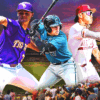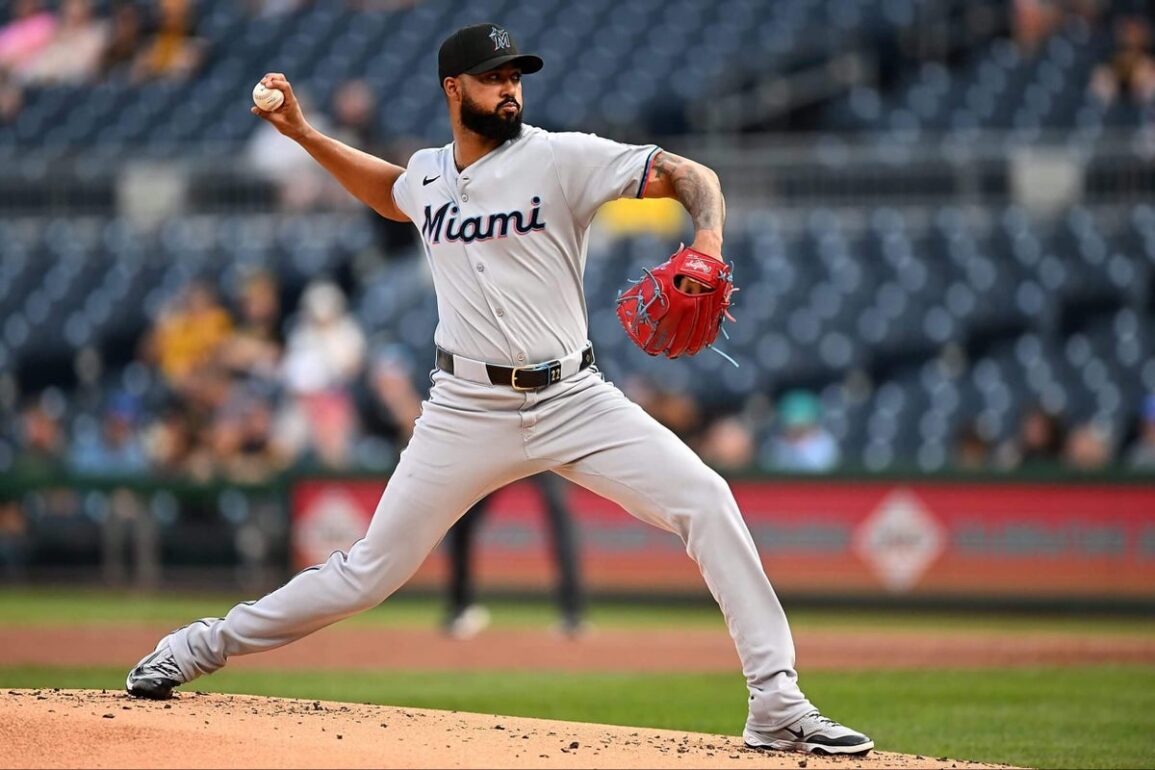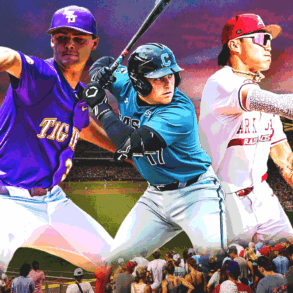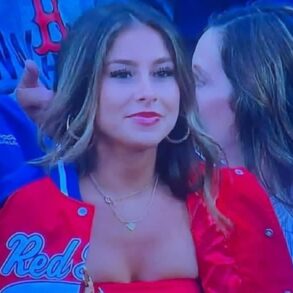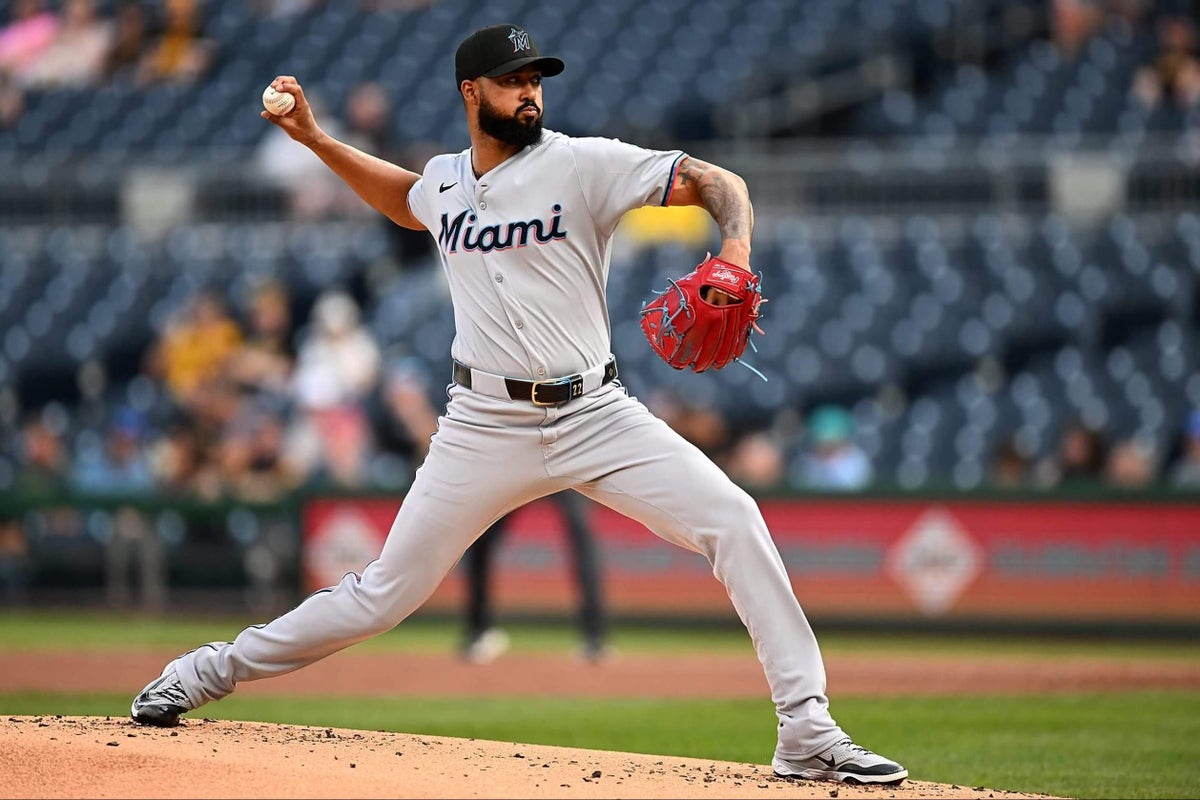
The temptation is not to get carried away with Miami Marlins right-hander Sandy Alcantara producing back-to-back quality starts for the first time this season. His opponents were the Colorado Rockies and Pittsburgh Pirates, the teams with the two worst offenses in the major leagues.
Marlins manager Clayton McCullough, however, saw a difference in what he called “the quality of Sandy’s throws.” So did a rival official who witnessed Alcantara’s start in Pittsburgh on Tuesday night.
Advertisement
The official, granted anonymity for his candor, said, “I walked away saying he is about three or four starts away from being the Sandy of old.”
If Alcantara continues pitching on five days rest, as he has for the majority of the season coming off Tommy John surgery, he would make eight starts before the trade deadline on July 31. By that time, a reemergence as the Sandy of old could make him what many at the start of the season expected him to become – the best starting pitcher available.
“For him, the walk rate (early in the season) was so uncharacteristic. The ability to execute at a high level, which he was terrific at pre-injury, was not the same,” McCullough said. “So while the stuff was very good – the velo was good, the shapes of his pitches were fine – his spray was just a lot larger, especially to left. I think it was just the finish to the throws.
“A couple of bullpens ago, he really focused on being glove-side with his work and being intentional there. Which I think in turn has got him driving the ball through the mitt and finishing his pitches.”
Examining the shapes and velocities of Alcantara’s pitches, his stuff has indeed mostly recovered since his surgery in Oct. 2023. His changeup doesn’t have quite as much drop, and neither does his curve, but his fastballs are mostly back, and overall his stuff is there. Stuff+ is a stat that sums up the physical qualities of his pitches, and most of his pitches are back to pre-surgery quality.
Sandy Alcantara’s stuff, over time
| Season | Stf+ FA | Stf+ SI | Stf+ SL | Stf+ CU | Stf+ CH |
|---|---|---|---|---|---|
|
2020 |
105 |
102 |
120 |
105 |
102 |
|
2021 |
97 |
119 |
112 |
94 |
114 |
|
2022 |
96 |
119 |
115 |
116 |
112 |
|
2023 |
99 |
120 |
111 |
113 |
108 |
|
2025 |
101 |
113 |
112 |
118 |
103 |
It’s command that eluded Alcantara in his early starts, a fairly common occurrence for a pitcher returning from major elbow surgery. Alcantara found his slider, in particular, difficult to harness.
Here’s his Location+, a count- and pitch-type adjusted measure of command on his different pitches over his career.
Sandy Alcantara’s command, over time
| Season | Loc+ FA | Loc+ SI | Loc+ SL | Loc+ CU | Loc+ CH |
|---|---|---|---|---|---|
|
2020 |
106 |
101 |
108 |
116 |
93 |
|
2021 |
107 |
103 |
111 |
98 |
101 |
|
2022 |
107 |
101 |
106 |
38 |
101 |
|
2023 |
115 |
102 |
101 |
95 |
104 |
|
2025 |
101 |
103 |
79 |
93 |
95 |
Other pitchers who lost this much Location+ on their slider and tried to gain it back include Blake Snell and Tanner Bibee, who no longer throw that version of the pitch as much any more. Alcantara has followed suit, cutting his slider usage and replacing it with the curve, which he is commanding better. He’s almost doubled his curve usage in recent games. His overall ability to command the ball is getting better, too:
“The Colorado start, the (catcher’s) glove moved far less than it had in his other outings,” McCullough said. “Even the balls were incredibly competitive. He had only one walk. Against Pittsburgh it was very similar. He’s continuing to trend execution-wise, which we all felt was going to happen and probably the last part of this whole return-to-play process.”
Advertisement
McCullough said Marlins pitching coach Daniel Moskos and assistant pitching coach Alon Leichman encouraged Alcantara to throw his breaking ball more, believing it would open up his arsenal. In an effort to get more swing-and miss, he also is throwing his four-seam fastball more and two-seam fastball less than he did in 2023, his last full season.
Alcantara topped out at 99.2 mph with his four-seamer against the Pirates and averaged 97.6. Perhaps more important, he is to the point where he can adjust his five-pitch repertoire to the lineup he is facing, and succeed with different mixes.
Against the Rockies’ right-handed heavy lineup, Alcantara used his sinker and changeup for a combined 47 percent of his pitches and his curve for 20 percent. The Pirates started four left-handed or switch-hitters. Alcantara went 32 percent curves, 22 percent four seamers and 20 percent sinkers, 16 percent changeups and 9 percent sliders.
His next start is likely to be against a more difficult opponent, the Philadelphia Phillies. Contenders in need of starting pitching – which is to say, pretty much all of them – will be watching closely. Alcantara, 29, won the 2022 National League Cy Young Award. He is owed the balance of $17 million this season and $17 million next season with a $21 million club option or $2 million buyout for 2027.
After 11 starts, his ERA was 8.47. In his last two, it’s 1.50.
Alcantara told reporters after Tuesday’s game he was proud of himself for staying patient and continuing to work hard, and “very happy” with the way he competed his last two outings.
“He was certainly not happy about the (early) results,” McCullough said. “But this guy just keeps punching the clock every day. He went out there and kept trying to work. Was his confidence shaken? Sure. But that happens to every elite athlete.
Advertisement
“We faced Germán Márquez a few games ago. I remember, this guy was an absolute animal. You would think he gets back close to that. But he’s not there yet. We faced Robbie Ray. It took him some time to come back. Walker Buehler, it’s taken time. While Tommy John has become such a common thing, and you know guys come back healthy, the back-end part of it, becoming the pitcher again, it takes more time than maybe sometimes we want to fully appreciate.”
It’s only two starts, against the Rockies and Pirates, no less, but the Sandy of old seems on the verge of reappearing.
For the Marlins, it might be just in time.
The Rays’ retro rotation
What in the name of Sergio Romo is going on here?
The Tampa Bay Rays, the team that revolutionized the sport by introducing the opener, are surging into contention with an old-fashioned, innings-eating rotation.
Not only do the Rays lead the majors in rotation innings, averaging more than 5 2/3 per start, they also are first in the American League with 34 quality starts.
So much for the past criticism of the Rays for trying to “reinvent the wheel.” That was never the intent, according to president of baseball operations Erik Neander.
“There are few things if anything more valuable than a starter who can turn over a lineup over three or four times 30 times a year and in a postseason. That is the goal,” Neander said. “Then it’s simply a matter of identifying steps in a player’s progression and development to hopefully in time reach that point.
“In a game that is so confidence-driven, a lot of this when you modify some of these roles is install an intermediate step in their development. You don’t want ask too much of them too soon. You continue to put them in a position of success and grow confidence before you ask more of them.”
An opener who allows a run in the first inning, with 24 outs to go, is in an easier spot emotionally than a reliever who falters in a tie game in the late innings. A bulk pitcher who enters a game after the the first inning also is under less pressure, needing to face the top of the order once or twice rather than three times.
Advertisement
The Rays intended to use a traditional rotation in 2023, when their projected Opening Day group consisted of Tyler Glasnow, Shane McClanahan, Zach Eflin, Jeffrey Springs and Drew Rasmussen. They started the season 13-0 and won 99 games, but most of those pitchers suffered injuries, and only Eflin made more than 21 starts.
To this point, the Rays’ rotation of Rasmussen, Ryan Pepiot, Zack Littell, Taj Bradley and Shane Baz has started all but one of the team’s 68 games. Injuries and ineffectiveness still could enter the equation. Rasmussen, 10th in the majors with a 2.22 ERA, has thrown more than 76 innings in a season only once, in 2022 when he finished with 146. Baz, sitting on a 4.97 ERA, might be replaced if he continues to struggle.
McClanahan, the team’s projected Opening Day starter, has yet to pitch this season due to left triceps nerve irritation. If he gets healthy, he could end up the equivalent of a deadline addition. But manager Kevin Cash told reporters Wednesday he is back in “kind of a shutdown mode.”
Reds on the rise
The Cincinnati Reds entered Wednesday 10th in the majors in runs per game, but that ranking was deceptive. The Reds scored 24 runs against the Baltimore Orioles on April 20, plus 11 or more four other times. In all other games, they were averaging 3.71 runs, which would have ranked 24th in the league. They had been shut out nine times.
The return last Friday of corner infielder Christian Encarnacion-Strand from an absence of nearly two months with lower back inflammation provided an immediate boost. Encarnacion-Strand went 8-for-21 with three homers in his first five games back, prompting general manager Nick Krall to call him a “game-changer” for the lineup.
The question for the Reds is whether they can find enough other offense internally to avoid pursuing help at the deadline. Part of the answer revolves around Austin Hays, who already has been on the injured list three times but is expected to return from a left foot contusion shortly. Third baseman Noelvi Marte, who is projected back from a strained left oblique before the All-Star break, also could be part of the solution. Ditto for second baseman Matt McLain and first baseman/outfielder Spencer Steer, both of whom have underperformed.
Pitching depth, even with ace right-hander Hunter Greene out with a right groin strain, remains something of a strength. Righty Rhett Lowder, the game’s No. 48 prospect according to The Athletic’s Keith Law, could return from right elbow and oblique strains after the deadline. Righty Carson Spiers, dealing with a shoulder impingement, eventually could rejoin the bullpen, and hard-throwing righties Luis Mey and Zach Maxwell are options at Triple A.
Advertisement
Then there is righty Chase Burns, the second overall pick in last year’s draft and No. 40 on Law’s list, who could be a weapon out of the ‘pen later in the season. The Reds recently promoted Burns to Triple A after he went 6-1 with a 1.29 ERA at Double A. In a combined 53 2/3 innings between High A and Double A, he has struck out 75 – and walked only nine.
Granted, it’s a lot of what-ifs for a team that is only one game over .500. But during their recent five-game winning streak, the Reds again showed they can be dangerous. They still might need to be active at the deadline, and heaven knows how much payroll flexibility Bob Castellini will give his front office. But this is a team to watch.
First-base shuffle coming
Ordinarily I’m not a fan of predicting where players might get traded at the deadline. It’s often pure guesswork, and an exercise a futility. But with the deadline seven weeks away, I’m comfortable saying this much: If Arizona Diamondbacks first baseman Josh Naylor and Baltimore Orioles first baseman/outfielder Ryan O’Hearn get moved, they need to land with two of these three teams: The Boston Red Sox, Seattle Mariners and San Francisco Giants.
The Red Sox rank 19th in OPS at first base, the Mariners 25th and the Giants 29th. Boston’s Triston Casas is out for the season, and Rafael Devers is still unlikely to play first. Seattle’s Rowdy Tellez entered Wednesday with 10 homers, but a .253 on-base percentage. And San Francisco’s Dominic Smith looms only as a stopgap after replacing LaMonte Wade Jr., who was designated for assignment and traded to the Los Angeles Angels.
O’Hearn, who entered Wednesday ranked 16th in the majors with an adjusted OPS 55 percent above league average, has slowed of late, going 4-for-25 in June. His breakout at 31, however, still qualifies as one of the great surprises of the season. Naylor, who also is eligible for free agency, also is enjoying a strong offensive season, with an adjusted OPS 27 percent above league average.
Neither the Orioles nor Diamondbacks is a certain seller, but both are trending that way. Other first basemen, including Washington’s Nathaniel Lowe, Milwaukee’s Rhys Hoskins, San Diego’s Luis Arraez, might become available. But at the moment, O’Hearn and Naylor look like the most likely to go.
RHHs vs. LHPs: What’s going on?
Over at Baseball Info Solutions, Mark Simon noticed something funky: righty hitters aren’t enjoying the platoon advantage as much these days as they once did. Their current slugging percentage against lefties is the worst it’s been this century, and he checked it by month as well.
Advertisement
“It could be pitch design,” said lefty starter Robbie Ray, who is employing Tarik Skubal’s changeup grip with great success this year. “Using seam effects to better design changeups.”
That might be the case, but changeup usage isn’t up across the league. Including splitters, there is a slight increase from 13.5 percent splitters and changeups in 2020 to 13.9 percent now. But that doesn’t speak to the quality. Maybe the changeups thrown now are just better.
“We just don’t see lefties as much any more,” said righty hitter Austin Riley. “They’re bringing righties out of the pen more now.”
The three-batter-minimum rule may have something to do with that. From 2010 to 2013, before that rule existed, LOOGYs (Lefty One Out Guys) ruled. Of all the pitches thrown in the big leagues, 28 percent were by lefties. That number is now below 26 percent, the second-lowest it’s been in the pitch-tracking era.
Is that enough to explain it? Or is it just another random baseball thing that happens from time to time?
Trop on schedule for 2026
Commissioner Rob Manfred chose his words carefully when he discussed the repairs to Tropicana Field last week, telling reporters that league officials “remain optimistic” the park will reopen in time for the 2026 season.
Manfred, speaking at the quarterly owners meeting in New York, said, “Obviously, the big contingency is what happens with hurricane season, right?” But barring any disruption, a timetable indeed is in place for the Trop to be ready by Opening Day.
The material for the roof has been ordered and is on schedule to arrive during the summer, according to a source briefed on the plans. Installation would start in September, and by Christmas the building could be sealed, giving the Rays approximately three months to prepare the field. Three scoreboards also would need to be mounted and lights installed during that time.
Advertisement
The St. Petersburg City Council last Thursday authorized about $5.3 million more in repairs, bringing the total amount approved to $38.5 million. The total cost of the projected is expected to be around $56 million. Some of that cost will be covered by insurance.
(Top photo of Sandy Alcantara: Joe Sargent / Getty Images)
This post was originally published on this site be sure to check out more of their content.


